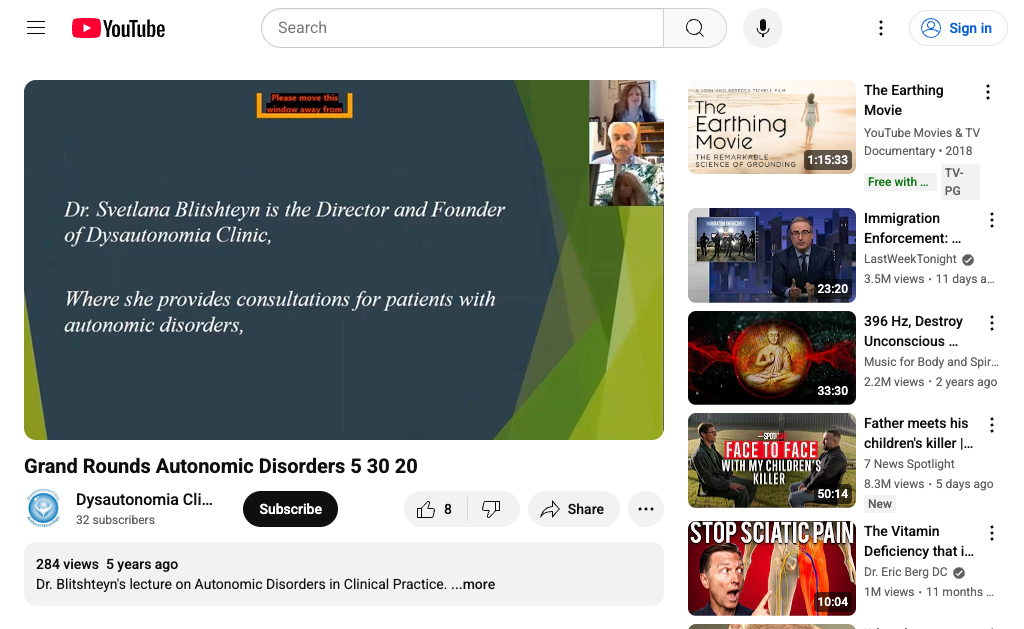Grand Rounds Autonomic Disorders 5 30 20
Dr. Blitshteyn reviews the evaluation and management of autonomic disorders seen in clinical practice, emphasizing POTS, vasovagal syncope, orthostatic hypotension (including neurogenic OH), and autonomic neuropathies. She outlines core diagnostic criteria (e.g., POTS: ≥30 bpm HR rise within 10 minutes of standing/tilt, ≥40 bpm in adolescents, without orthostatic hypotension) and differentiates from inappropriate sinus tachycardia and arrhythmias. Practical bedside testing (orthostatic vitals/active stand), formal autonomic testing (tilt-table, QSART/sudomotor testing), and when to consider skin biopsy for small fiber neuropathy are discussed, along with basic labs to rule out contributors (anemia, thyroid, B12/iron deficiency, dehydration). Management centers on nonpharmacologic therapy first: high fluid/salt intake as appropriate, compression garments, counter-maneuvers, heat avoidance, sleep optimization, and graded recumbent-to-upright exercise reconditioning. Pharmacologic options are individualized: volume expanders (fludrocortisone), vasoconstrictors (midodrine, droxidopa for nOH), rate control (low-dose beta-blockers, ivabradine), and cholinergic augmentation (pyridostigmine), with attention to side effects and contraindications. She highlights common comorbidities—migraine, hypermobility/EDS, autoimmune features, GI dysmotility, sleep disturbances, and possible mast-cell mediated symptoms—and stresses a multidisciplinary, symptom-targeted approach with patient education, realistic expectations, and careful follow-up.
